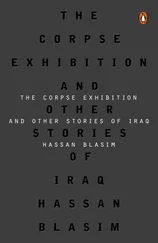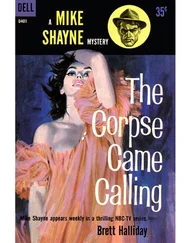Later I saw her standing in line at the cafeteria. She’d changed and was wearing a gray skirt with a white shirt. I approached her and said, “I wanted to save you from drowning, but I can’t swim.”
She turned toward me with a scowl and asked very seriously: “Excuse me. Come again?”
“The exercise. This morning? Drowning … I was sitting there and saw you drowning.”
She laughed and said: “Oh, yes. Thank you for your gallantry, but it’s useless if you can’t swim.”
“Intentions don’t matter?”
“Yes, of course. Intentions are crucial.”
Then she introduced herself: “Reem, theater.”
I said: “Delighted. Jawad. Arts.”
Her eyes were pitch-black and gleamed with confidence as she spoke somewhat slowly. Her eyelashes were thick, her eyebrows carefully plucked. She was wearing light makeup. She bought crackers and a cup of tea with milk and offered to buy me something in appreciation of my noble intentions. I thanked her but I had to leave for a class. I noticed the gold ring on her left hand as she paid and felt a pang in my heart. Damn! She’s married. All this beauty for another man who waits for her at the end of the day.
“Some other time then,” she said.
We said goodbye and I headed to the door. We exchanged smiles. I could train myself, I determined, to be just friends with a woman.
I saw her again a week later on the sidewalk outside the academy. She was getting into a beautiful blue car with tinted windows. The driver was a man, probably her husband, wearing sunglasses. I caught only his black moustache. Then she disappeared and I didn’t see her again that year. One day I saw a friend I’d seen her with and asked about Reem’s disappearance. She said that Reem had dropped out for personal reasons, but she refused to say more. I wondered whether Reem was ill. I asked other students in the theater department and heard a rumor that her husband had forced her to drop out.
I remembered how my father shook his head when he was certain that I wanted to make the Academy of Fine Arts my first choice. My average score in the countrywide baccalaureate exam was 87.7 percent. That would probably guarantee acceptance in the engineering departments at al-Mustansiriyya University and other universities in the provinces, or in fields such as literature or the sciences if I made these my top choices.
He asked me sarcastically: “So what will you be after you finish? An arts teacher?”
I answered: “Maybe. What’s wrong with that, anyway? Is teaching shameful? There are other types of work as well.”
He handed back the list and repeated a favorite sentence: “One has to look out for one’s livelihood, son!” And after a heavy silence: “Even if you don’t want to work with me, at least study something useful for yourself and others. Something good!”
I wasn’t surprised, but the episode saddened me. He never forgave me for straying from the path and favoring art over the useful profession he had inherited from his ancestors. I folded the sheet of paper without saying anything. Mother, who was sitting at the other end of the couch, tried, as usual, to lighten the mood: “Great things are awaiting Jawad and he deserves the best. Good luck, son.”
Father gave her a silent look and then went back to nursing his cup of tea.
“Pythagoras says that there is music in stone.”
So began Professor Isam al-Janabi’s first lecture on the history of sculpture. I still remember the details clearly. He added that Goethe appropriated this idea and used it in a remark about architecture as frozen music. Professor Isam al-Janabi’s style in his lectures about art and life seemed like poetry to me. He was adept at using quotations to crystallize the subjects of his lectures or illustrate the ideas he was explaining to us. He once quoted Picasso: “Art is the lie that represents truth.” The images and slides he used gave his lectures an additional dimension and set them apart from the dry and boring styles of the other professors.
He was almost fifty. He’d been to Italy a few years before, after completing his graduate studies. He was a famous artist, well known throughout the Arab world, and had had numerous exhibitions. He also published occasional critical essays in newspapers and journals about art history. His style of dress was stereotypically bohemian. His long curly hair was the longest among students and professors. He had a bushy moustache and long beard whose white fringes he used to stroke a lot.
He asked for help closing the shades for the slide show. I was sitting in the back of the darkened lecture hall, one of thirty-some students. I took out my notebook and prepared to jot down notes. Speaking without notes, he took us on a panoramic journey through the history of sculpture.
He was collecting his papers and putting them in his bag after class when I approached him to ask about Giacometti. He had showed us images of some of Giacometti’s works which fascinated me, especially one entitled Man Walking. He smiled as he put his bag over his shoulder and asked, “What in particular do you like about him?”
I was a bit flustered, because I’d never reflected on my reasons for loving certain works of art. Beauty would simply and suddenly hit me in the gut. I hesitated, then said, “I don’t know exactly, but I felt that the man he sculpted was sad and isolated.”
Professor Isam al-Janabi smiled, and his eyes glittered. “Bravo. Many critics say that his works express an existentialist attitude toward the emptiness and meaninglessness of life.” He said the last sentence in standard Arabic and in a different tone. Then he added: “Remind me of your name again?”
“Jawad,” I said.
“Of course you loved him, Jawad. How could you not?”
We left the lecture hall together and continued our conversation about Giacometti and abstract sculpture until we reached his office. He asked me to come in. Stacks of papers, books, and clippings were piled on his desk and chair. The shelves were piled to the ceiling with books. He put his bag on his desk, then gathered the pile of manuscripts and newspapers from a chair so I could sit. I looked at the books. Most of them were in Arabic and English, but there were some titles in Italian. A huge black-and-white poster of Giacometti covered what was left of the wall. In the picture, Giacometti was carrying one of his tiny statues and walking between two thin large ones. I was taken by the poster, and Professor Isam al-Janabi noticed my reaction.
He looked at it as if seeing it for the first time: “Ah, here is your friend Giacometti in his studio.” Then he asked me about my background and interests, listening intently to everything I had to say. He, too, had come from a poor family. His father worked at a paper mill and wanted him to be an engineer, not an artist.
I asked whether he’d met Giacometti. He said he hadn’t, because Giacometti died years before he had gone to Europe. He got out of his chair and looked for something on the shelves. After half a minute, he reached up and plucked a book from one of the top shelves. It was a big book with Giacometti’s name written in a big font on the cover. He blew the dust away and gave it to me, saying it contained all of Giacometti’s works and I could borrow it, provided I took good care of it. I was very happy. He looked at his watch and said that he had a lecture in a few minutes. I apologized and thanked him for his time. We shook hands and said goodbye.
I left his office and headed to the library to use the dictionary to help me understand the English texts and captions accompanying the images. I sat leafing through the book fondly, reading all about Giacometti’s life. I was fascinated by his work and wanted to know its secrets, so I started looking at his family photos wanting to know everything about him as if he’d become a relative. I learned that he was born in 1901 in Switzerland and died in 1966 after living through two world wars. Perhaps that explained the sadness in his works. He had studied in Paris with Bourdelle, who had worked with Rodin, but his work was so distinct that it was difficult to categorize. His statues were conspicuously thin, as if they were threads or thin mummies exhumed out of tombs. The body was always naked and with minimal features. Some works were of a hand waving alone without a body. Humans, in Giacometti’s world, be they men or women, appeared sad and lonely, with no clear features, emerging from the unknown and striding toward it.
Читать дальше












